We now focus on the Norwegian Panser Bataljonen participants of North (Red) Force on the centre axis during TRIDENT JUNCTURE 2018, writes Bob Morrison.
~
In addition to TRJE18 being a massive multinational training exercise for the NATO Alliance, held in Central Norway at the invitation of the Norwegian Government, these wide-ranging manoeuvres were also used to validate the Scandinavian nation’s Brigade Nord. Headquartered at Bardufoss, well inside the Arctic Circle, and Norway’s primary Land Forces manoeuvre formation, this brigade consists of two almost fully professional mechanised infantry battalion battle groups, one light infantry battalion comprised mostly of conscripts and reservists, an artillery battalion and an engineer battalion plus supporting assets including intelligence, signals and logistics battalions.

For TRIDENT JUNCTURE 2018 the brigade’s Setermoen-based Panser Bataljonen, literally translation is Armoured Battalion but they are actually a Mechanised Infantry battle group with a mix of tanks and tracked infantry fighting vehicles, played enemy to the British-led multinational South (Blue) Force brigade defending the the North-South axis along the centre-most of three parallel valleys; running from Telneset and Tynset in the north through Tylldalen on the Tysla River to Storsjøen Lake in the south. The Panser Bataljonen, which takes the Black Mink as its mascot, consists of: one cavalry squadron, with CV90 recce vehicles; one armoured squadron, with Leopard 2A4NO main battle tanks; two strike squadrons, with CV90 infantry fighting vehicles; a combat support squadron, including logistics, signals and medical assets, etc.; and, when deployed operationally or in this case on a major exercise, a combat battalion group consisting of artillery, engineer and intelligence etc. assets drawn from brigade.

The accompanying photos are of the Panser Bataljonen battle group armoured vehicles on D+3, as they prepared to make what would turn out to be the final push of their advance, the Battle For Bergset, and next day (F-Day) as they awaited the counter-attack by South (Blue) Forces. The bulk of the Norwegian armoured vehicles we encountered were Leopard 2A4NO tanks and standard CV9030N Infantry Fighting Vehicles, but we also spotted some of the new MultiC and STING variants of the CV90 (see separate album). As the battlegroup moved south it was supported by a battery of M109A3GN self-propelled howitzers from the Setermoen-based Artilleri Bataljonen and armoured engineer vehicles from the Skjold-based Ingeniør Bataljonen plus a small number of NM196 (M577) tracked and SISU Pasi 6×6 field ambulances.
Gallery images, from top left to bottom right:-
- One of a pair of NM189 Ingeniør Panservogn (Armoured Engineer Vehicle) cautiously advancing uphill on ice to prepare defensive positions on the right flank.
- This NM190 Brolegger Panservogn (Armoured Bridgelayer) snapped through my windscreen popped out of the forest to attempt to build a new bridge over the Tysla.
- After failing to take Bergset the Red Force Leopard 2A4NO tanks prepared to defend the main route north against Danish and Polish tanks from the UK-led battle group.
- The same Leopard 2A4NO tank seen from the opposite side – Norway bought 52 surplus Leopard 2 tanks from the Dutch Army in 2001 and has updated them closer to A5 standard.
- Procured in 1994 and upgraded in 2014, the CV9030 with Bushmaster MkII 30mm automatic cannon turret is the standard Norwegian Infantry Fighting Vehicle.
- This is one of a new batch of sixteen turret-less CV90 armoured fighting vehicles known as the MultiC – we have produced a separate photo album of this version and the STING engineer variant.
- Close-up of the Protector RWS (Remote Weapon Station) mounted atop the standard CV9030N turret.
- Close-up of the Protector RWS (Remote Weapon Station) mounted atop the turret-less CV90 MultiC.
[images © Bob Morrison]
In the next In Focus article in this series we will look at the constituent parts of the British-led South (Blue) Forces multinational battle group tasked with blocking the Panser Bataljonen at the Elvål river crossing, a few kilometres north of Bergset, and then pushing them back to their start line on the Trøndelag County border.
To be continued…


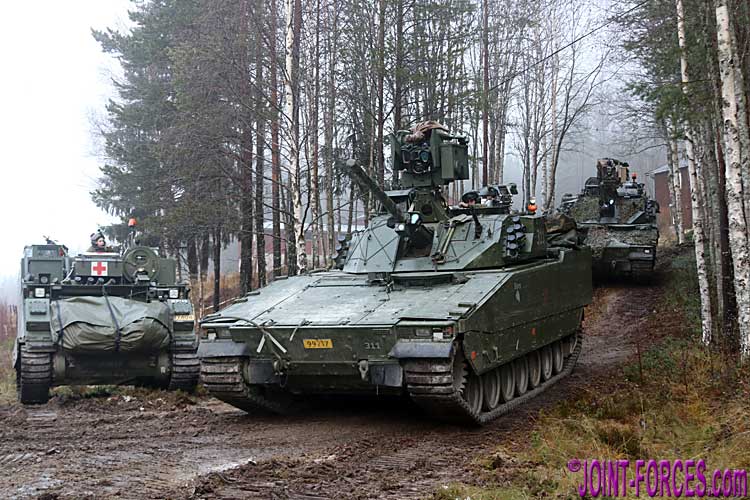
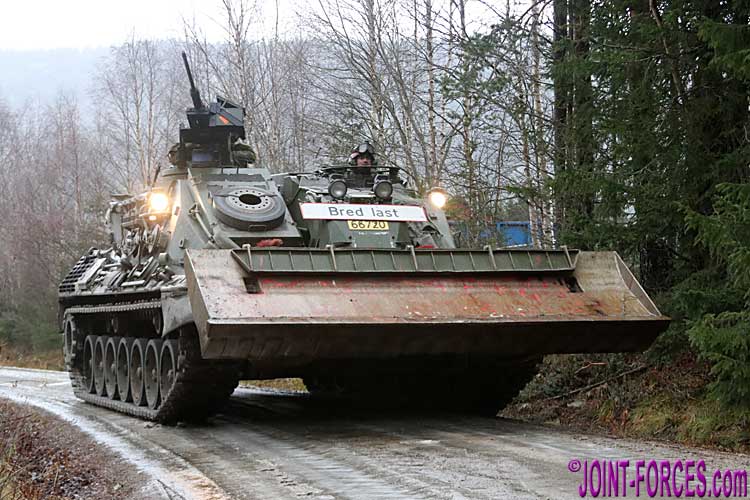
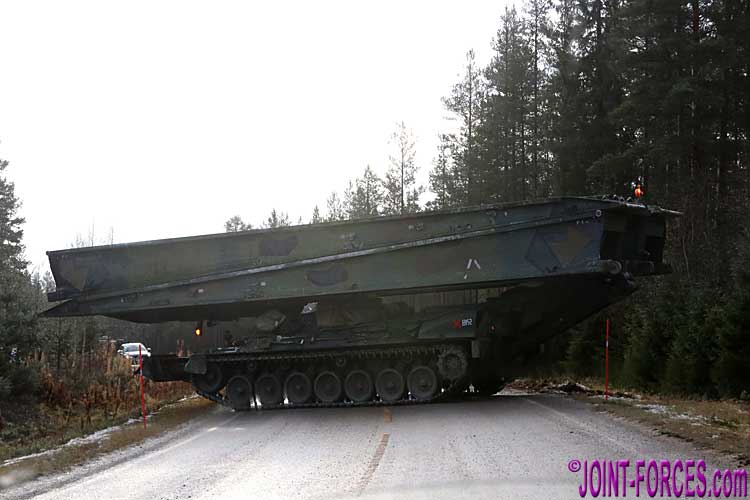
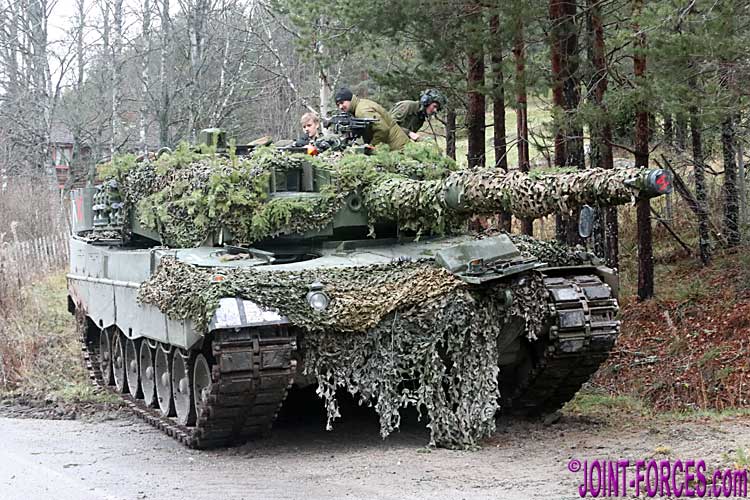
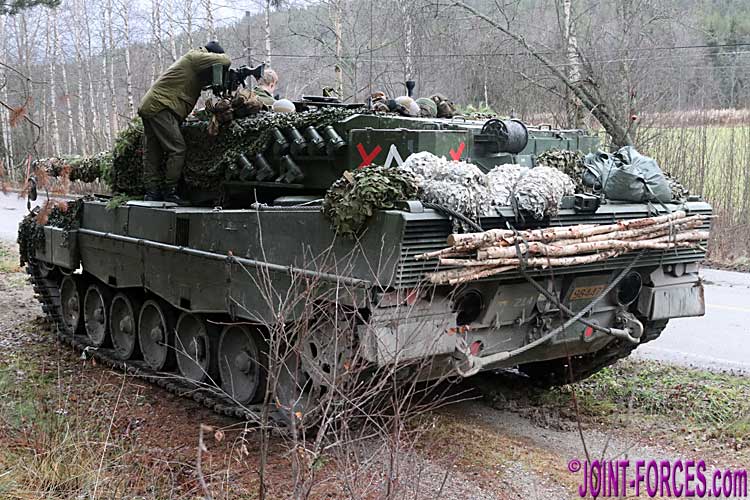
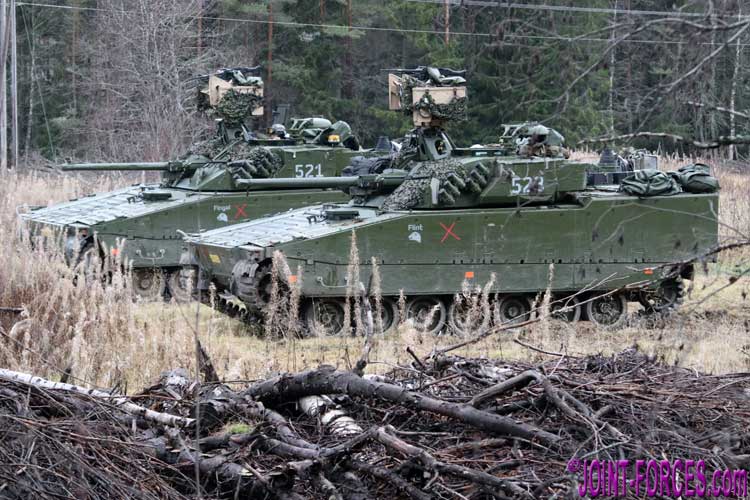
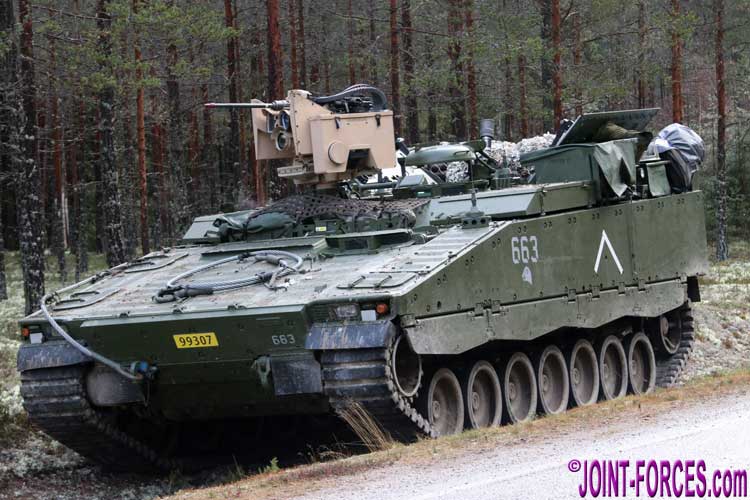

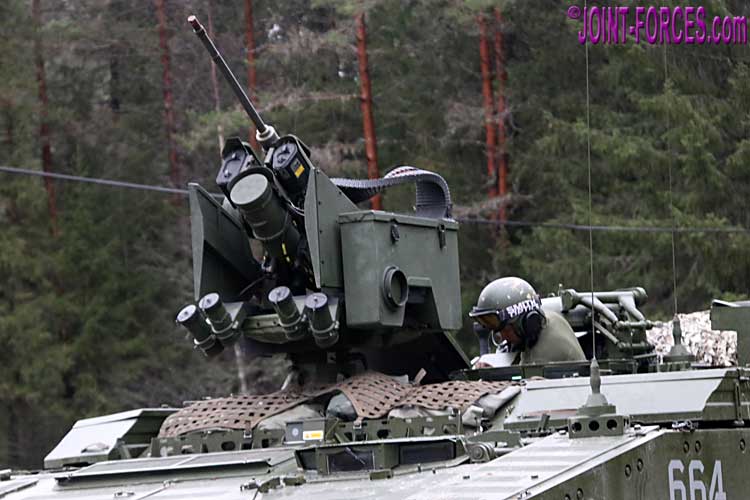
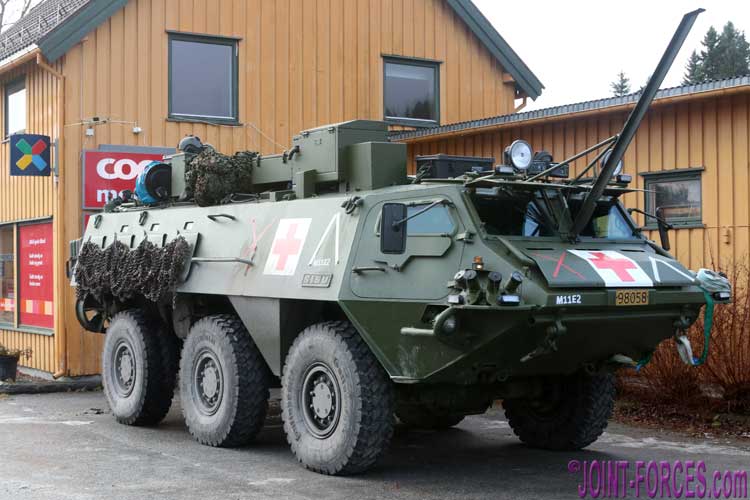


















Pingback : TRJE18 In Focus 09A ~ CV90N Album - Joint Forces News